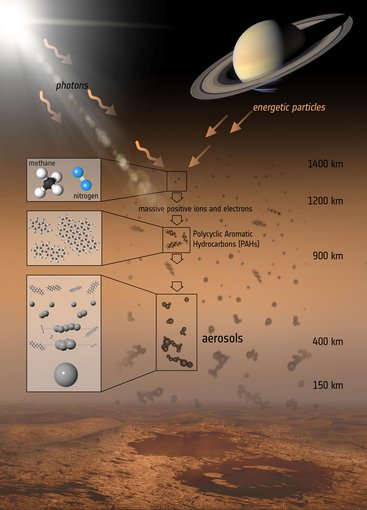
A moon of Saturn has been discovered to have an unexpected assortment of carbon-based molecules, likely stemming from its concealed ocean—an atmosphere where life could potentially emerge, as per new findings.
NASA’s Cassini spacecraft passed through the enormous geysers bursting from Enceladus in 2008. These plumes, extending 6,000 miles above the moon’s frigid surface, consist of water, salts, and a combination of intricate carbon-based molecules. These include substances that, on Earth, typically arise from hot water-rock interactions near ocean floor vents, which many researchers believe is where life on our planet initiated.
Cassini had previously identified minuscule ice particles in Saturn’s rings that contained organic molecules and precursors to amino acids, the essential components of proteins. Scientists have long believed that the material from Saturn’s “E ring” is derived from Enceladus. Nonetheless, those samples may have been modified by cosmic radiation over many years. More unaltered samples from nearer the source were necessary.
Nozair Khawaja, the principal author of the new study published in Nature Astronomy, mentioned that the data was already available but not fully comprehended.
“With increased knowledge, experience, and experimentation, we reexamined the flyby data in greater detail and recognized features that we observed for the first time,” Khawaja told Mashable.
Researchers indicate that the discovered organics likely originated from the ocean floor of Enceladus, rather than being contaminated by space. Cassini collected the newly ejected particles with its Cosmic Dust Analyzer instrument moments after Enceladus released them. The data was recorded during the spacecraft’s swiftest flyby at speeds exceeding 40,000 mph.
This high velocity provides the team with greater assurance in the results since particles disintegrate differently at such speeds, facilitating the detection of organic molecules, said Khawaja, a scientist at Freie Universität Berlin.
After replicating the ice grains colliding with the detector at both high and low speeds in a laboratory, they achieved consistent results. This suggests that the chemical signatures observed were true characteristics of the molecules, not the result of the impact.
The new study compared the organic molecules previously found in Saturn’s E ring with the fresh ice grains and found alignment, reinforcing the concept that the ring’s material originates from the moon’s subterranean ocean.
The team also identified entirely new organic compounds, indicating that the chemistry of Enceladus’ ocean is more intricate than formerly understood. Researchers discovered ring-shaped carbon molecules and oxygen-linked substances, such as aldehydes, which can lead to amino acids on Earth. They also found esters, alkenes, and ethers—types of chemicals that frequently appear in living organisms as fats and oils. The grains also contained traces of nitrogen-oxygen compounds, like acetonitrile or pyridine.
To date, Cassini has detected five of the six essential elements required for Earth life at Enceladus. The one element missing is sulfur. The team continues to perform laboratory experiments with sulfur compounds to determine if they can replicate the signals in simulations. Sulfur might simply be a more difficult element to identify.
The findings of the study bolster ESA’s plans for a future mission to orbit and land on Enceladus.
“This further strengthens the potential for habitability,” Khawaja stated, “increasing the necessity for a new mission.”